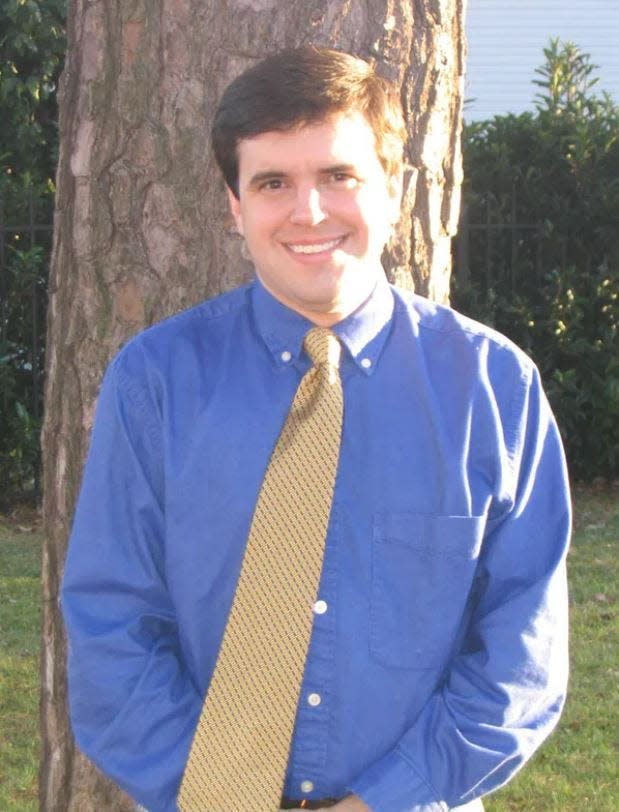Bridges: Bernardo de Galvez governed Spanish Louisiana in American Revolution
The Revolutionary War found the American colonies in a desperate struggle for independence against one of the great superpowers of the 18th century, the British Empire. America found help in unexpected places. What turned out to be some of its most important foreign aid came from half a continent away from a largely unknown provincial Spanish governor, Bernardo de Galvez. Galvez served as governor of Spanish Louisiana, an area that at the time included Texas.
Bernardo de Galvez was born in a small mountain village on the southern tip of Spain in 1746. His father was a respected officer in the Spanish army. The younger Galvez began his military career at the age of 16 during the Seven Years War in the Spanish attack on neighboring Portugal. He earned the rank of lieutenant and was sent to what is now the American Southwest shortly afterward and fought in many battles with the different Native American tribes the Spanish were trying to subjugate. He was injured many times and cited for his bravery, rising to the rank of captain while still in his teens.

He returned to Spain in 1772. He took a number of assignments, including serving as an instructor at a military academy before returning to the New World and rose through the ranks. In 1777, Galvez, just 31, was named governor of Spanish Louisiana. The sprawling territory, which included Louisiana, large portions of East Texas and the Red River Valley, and lands all the way to the Dakotas and the Rocky Mountains, were under his command.
The American Revolution erupted two years prior to Galvez becoming governor. A British defeat would take immense pressure off the Spanish in North America. However, the delicate diplomatic situation between Spain and Great Britain prevented him from taking any overt action. Nevertheless, he devised a plan to aid the colonists anyway. In 1777, he quietly pulled together supplies and sent them up the Mississippi River to the Ohio River and from there to Pennsylvania. He sent weapons, medical supplies, and uniform materials worth more than $2 million in 2024 dollars to a grateful Continental Army.
In 1778, a group of American refugees came to Galvez seeking land and founded Galveztown in Southeast Louisiana. Galvez began sending troops and colonists to the area in hopes of transforming the area in a Spanish military base against British intrigues in Spanish Florida. By August 1779, Spain was at war with England, and it was Galvez's job to oversee the defense of Spanish interests in the region.
While there would be clashes between Spanish and English land forces, Galvez realized the bulk of the fighting would be naval battles in the Gulf of Mexico and the Caribbean Sea. English naval supremacy prevented many supplies from reaching the colonies. By contrast, the American navy, though staffed with spirited men, consisted of only a handful of ships and was too small to cause any significant damage to the huge British fleet. However, France and Spain, with their large fleets, proved to be a much more even match.
In late 1779, a message to British forces in Jamaica was intercepted by the Spanish, and Galvez prepared Louisiana for an attack. His forces deflected a British force at Baton Rouge in 1779. He sent the Spanish fleet to attack British ports and ships in the region. Slowly, he wore down the British advantage, allowing much needed supplies to reach the Americans. Galvez was preparing to press the advantage of the Spanish with an invasion of British Jamaica when word came that the war had ended. George Washington himself extended his lavish praise to Galvez in his role in the long war for American freedom.
With the fighting over by 1782, Galvez represented Spain in the treaty negotiations in Paris to formalize the end of the war. He worked closely with his American counterpart, Ben Franklin, to help secure the new nation’s strategic interests while regaining Florida for Spain. The Treaty of Paris was formally approved in 1783.
In 1785, he was appointed viceroy of New Spain by King Charles III. New Spain included all of Spain’s imperial possessions in North America and the Caribbean Sea, from Panama to California to Florida. As viceroy, Galvez was second only to the king in all matters relating to North America.
He fell ill and died in Mexico City in November 1786 at the age of 40. Statues honoring him were later placed in New Orleans, Washington, D.C., and Mobile, Alabama. Galveston was named for him when it was founded as a Mexican port in 1825. Congress named him as an honorary American citizen in 2014.
Ken Bridges is a writer, historian and native Texan. He holds a doctorate from the University of North Texas. Bridges can be reached by email at drkenbridges@gmail.com.
This article originally appeared on Amarillo Globe-News: Galvez served as governor of Spanish Louisiana in American Revolution
